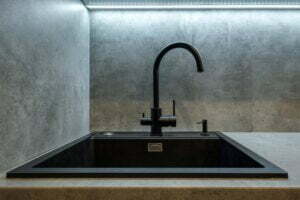Last Updated on 2 months ago by Nicky Johnson
The kitchen is often considered the heart of the home, but when plumbing issues arise, it can quickly become a headache. From leaky faucets to clogged drains, kitchen plumbing problems can disrupt daily routines and lead to costly repairs if left unchecked.
However, many common kitchen plumbing issues can be resolved with a bit of know-how and a few simple tools. In this article, we’ll explore five common kitchen plumbing issues and provide step-by-step instructions on how to fix them yourself.
1. Leaky Faucet
Blog Contents
A leaky faucet is not only annoying but can also waste a significant amount of water over time. In most cases, a leaky faucet is caused by a worn-out washer or O-ring. To fix it, start by turning off the water supply to the faucet.
Then, disassemble the faucet handle using a screwdriver and remove the old washer or O-ring. Replace it with a new one of the same size and reassemble the faucet. Turn the water supply back on and check for leaks. If the problem persists, you may need to replace the entire faucet cartridge.
2. Clogged Drain
A clogged kitchen drain is a common problem, usually caused by a buildup of food debris, grease, or soap scum. To unclog a drain, start by removing any visible debris from the drain opening using a pair of gloves or a small tool.
Next, try using a plunger to dislodge the blockage by creating a tight seal around the drain and applying firm pressure. If the plunger doesn’t work, you can try using a drain snake or a bent wire hanger to reach further down the pipe and remove the clog. Finally, flush the drain with hot water to help clear any remaining debris.
3. Dripping Garbage Disposal
A dripping garbage disposal can be caused by a loose or worn-out seal between the disposal unit and the sink flange. To fix it, start by turning off the power to the disposal unit at the circuit breaker.
Then, use a wrench to tighten the mounting bolts that secure the disposal unit to the sink flange. If the bolts are already tight, you may need to replace the rubber gasket between the disposal unit and the sink flange. Once the gasket is replaced, restore power to the disposal unit and check for leaks.
4. Low Water Pressure
Low water pressure in the kitchen sink can be caused by a variety of factors, including mineral buildup in the faucet aerator or a partially closed shut-off valve. To fix it, start by removing the aerator from the faucet and soaking it in vinegar overnight to remove any mineral deposits.
If that doesn’t improve water pressure, check the shut-off valves under the sink to ensure they are fully open. You can also try cleaning the faucet head and checking for any kinks or obstructions in the water supply line.
5. Running Toilet
A running toilet can waste a significant amount of water and drive up your water bill. In most cases, a running toilet is caused by a faulty flapper valve or a worn-out fill valve. To fix it, start by turning off the water supply to the toilet and removing the tank lid.
Check the flapper valve for any signs of damage or deterioration and replace it if necessary. If the flapper valve is in good condition, try adjusting the float arm or replacing the fill valve to stop the running water.
By addressing these common kitchen plumbing issues yourself, you can save time and money from plumbing repairs while keeping your kitchen running smoothly. However, if you encounter a plumbing problem that you’re not comfortable fixing on your own, don’t hesitate to call a professional plumber for assistance.







